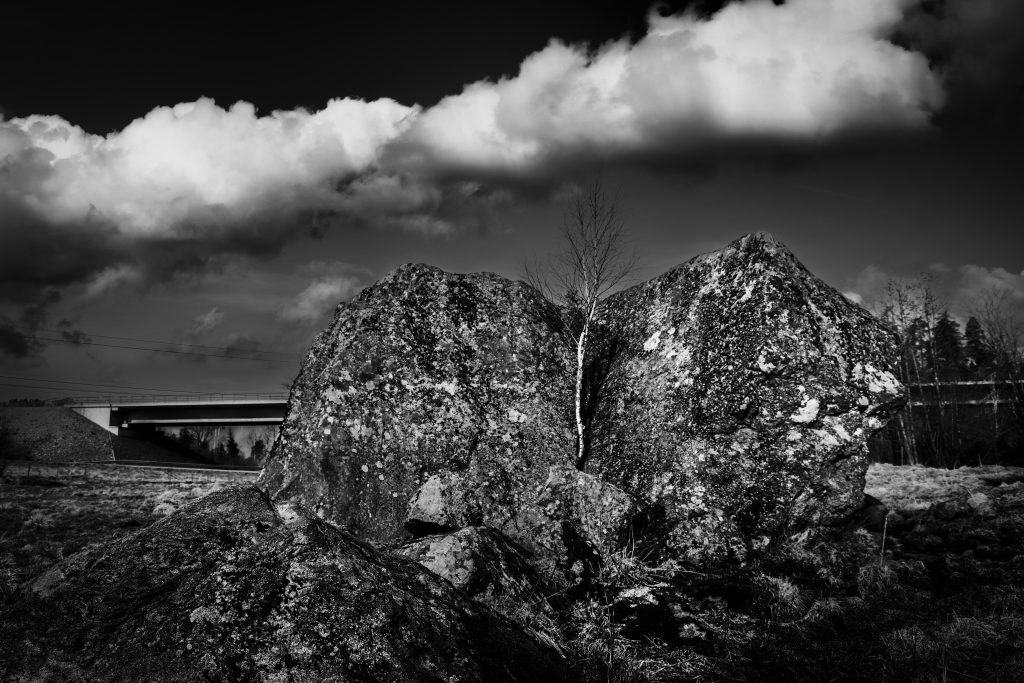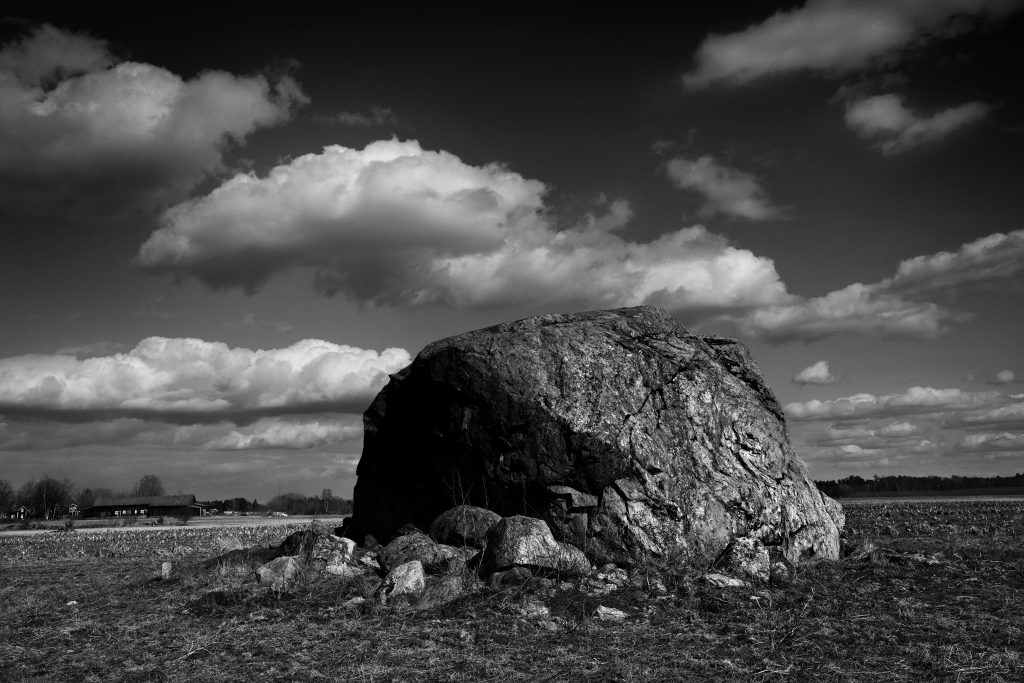
Glacial erratics — large stones transported and left behind by glacial ice, often far from where they originally came from — have always fascinated me. They just lie there, as if some giant had a bit of fun tossing them around. It’s a thought that sparks the imagination — far more playful than the more accepted explanation that the ice sheet once dragged these stones along as it melted and retreated. It’s almost impossible to grasp, but Swedish stones, frozen into the ice during one of the glacial periods, have actually been found as far south as northern Germany

This particular erratic sits quietly on farmland in Vångsö, just outside Eskilstuna. As far as I know, it has no name and isn’t any sort of tourist attraction. It just lies there in the field — like a quiet protest against our human urge to name, label, and explain everything. And maybe that’s what makes it beautiful: the fact that it’s simply allowed to be a stone.

Botsmark’s Erratic, on the other hand, is the largest in Sweden and appears on Västerbotten’s nature map. It stands 15 meters tall and weighs around 35,000 tons — now that makes an impression.
But none of that applies to this humble boulder, resting peacefully just outside Katrineholm. Still, you can’t help but wonder: where has it been? And what has it seen on its journey here?